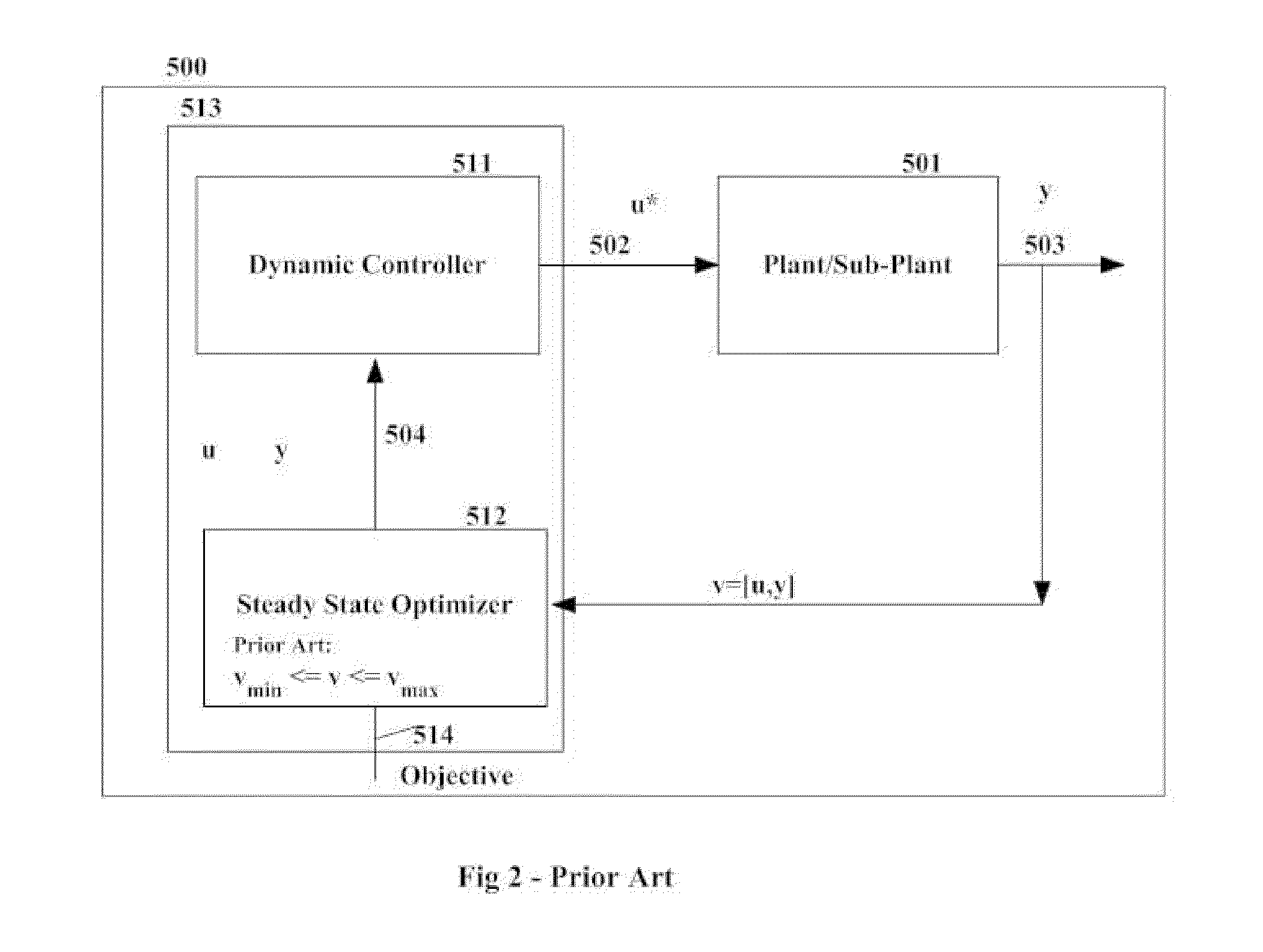Use of dynamic variance correction in optimization
a dynamic variance and optimization technology, applied in adaptive control, process and machine control, instruments, etc., can solve the problems of degrading the controllability of the process, limiting the feedback correction mechanism, and controlling variables that unavoidably violate the constraint limits, so as to prevent dynamic violations of the constraints of variables. , the effect of reducing the dynamic violation of the constraints
- Summary
- Abstract
- Description
- Claims
- Application Information
AI Technical Summary
Benefits of technology
Problems solved by technology
Method used
Image
Examples
Embodiment Construction
FIG. 1 outlines the apparatus of and functioning of optimization and control relating to a dynamic process system as per the proposed invention. For the sake of brevity, the differences and the contrasts of FIG. 1 in relation to FIG. 2 will be highlighted.
Basically, the overall functioning of the apparatus and the system as proposed by the invention as per FIG. 1 works as follows;1) With the proposed invention, block 416 calculates variance of all of the variables as stated below. These variances are calculated at the same frequency as that of the control actions. The process values required for these are read from a real time data gathering system such as distributed control system.2) The calculated variance along with the weighing factor for each of the variables is used in modifying the high and low constraints as stated below, in block 412 as part of the steady state optimization solution.3) The modified constraints are then used in the solution of the steady state optimization ...
PUM
 Login to View More
Login to View More Abstract
Description
Claims
Application Information
 Login to View More
Login to View More - R&D
- Intellectual Property
- Life Sciences
- Materials
- Tech Scout
- Unparalleled Data Quality
- Higher Quality Content
- 60% Fewer Hallucinations
Browse by: Latest US Patents, China's latest patents, Technical Efficacy Thesaurus, Application Domain, Technology Topic, Popular Technical Reports.
© 2025 PatSnap. All rights reserved.Legal|Privacy policy|Modern Slavery Act Transparency Statement|Sitemap|About US| Contact US: help@patsnap.com



